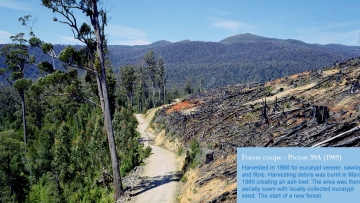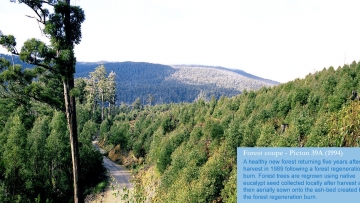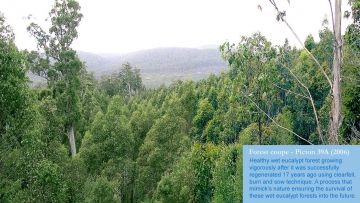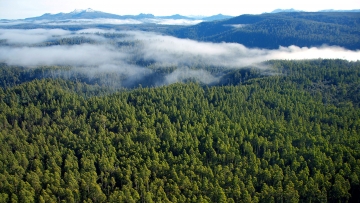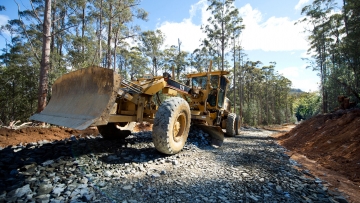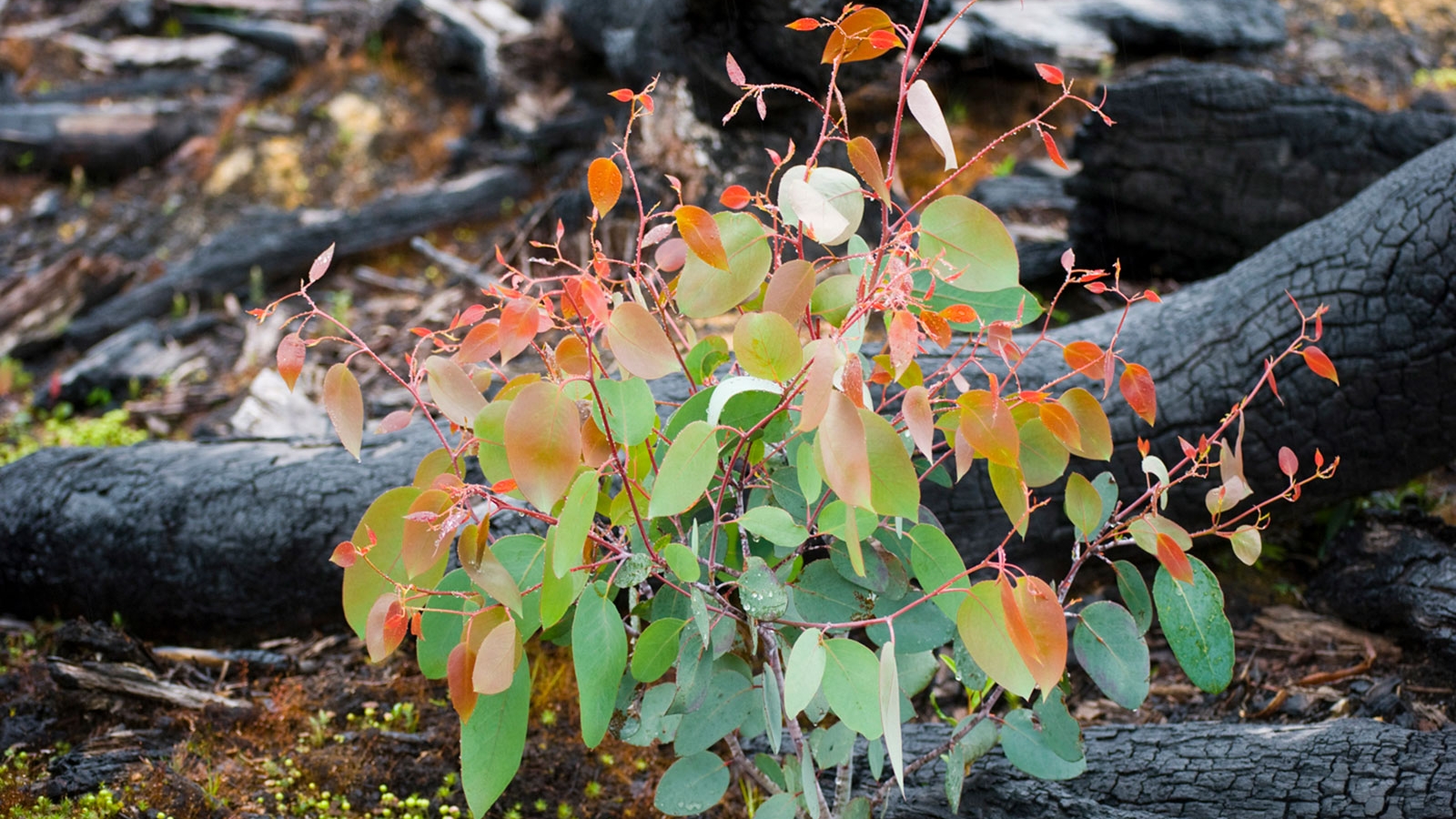
Regrowing our forests
Regrowing the forest after harvest is a very important part of Sustainable Timber Tasmania’s role. This work is essential for the long-term sustainability of Permanent Timber Production Zone land.
How Sustainable Timber Tasmania regrows the forest is largely determined by the type of forest it is. In fact, the type of forest determines the harvest method. For more information, see Fact Sheet No. 5 Harvesting and regrowing in the tab below. The method selected is based on how best to regenerate that type of forest.
In plantations, site preparation works such as windrowing, cultivation and weed control are often required before appropriately selected seedlings are planted, fertilised and monitored for growth.
In native forests, burning or ground disturbance using machinery is used to provide a seedbed for either broadcast or naturally sown seed.
Example native forest coupe - Picton 039C was harvested in 1988 for veneer, sawlog and pulpwood. Logging debris was burnt in March 1989. The area was then sown with eucalypt seed collected locally. Gallery photos below show the sequence of regrowing this forest coupe following a clear-fell, burn and sow technique (Fact Sheet No.10 Clearfelling also in the tab below) used in wet eucalypt forests.
Before any works begin, a Forest Operation Plan is required for all reforestation operations.
The first few years after establishment are critical to developing a fully productive forest. In all forest types, regular monitoring of tree survival and performance is undertaken to identify and treat any problems early.
The effectiveness of regrowing forests is assessed and reviewed annually through Sustainable Timber Tasmania’s quality standards systems.
